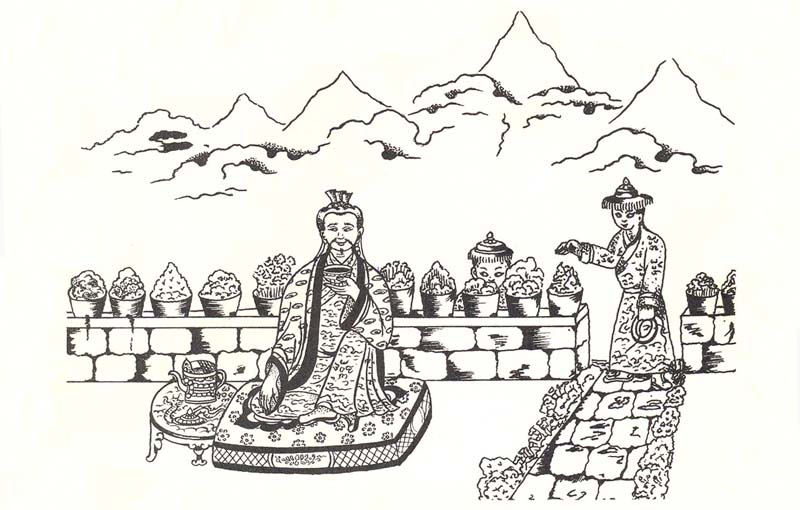The achievements of the Tibetans between the seventh and ninth centuries are quite remarkable. How did they manage it? It is possible that the population of Tibet was larger at that time than it is today. Some writers describe these early Tibetan kings leading armies of early half a million men – though this is probably an exaggeration.
One of the main reasons for Tibet’s success was that in the beginning the nobles and the Bon priests were united under their support for the king and his government. But as the years went by, quarrels and jealousies broke out. Rival families fought, murdered and poisoned one another in order to gain more power. Religion was the cause of many quarrels. Before the seventh century, kings, nobles, and commoners all believed in the Bon religion, which, as we have seen, was closely linked with the royal family. However, Songtsen Gampo and his successors favored Buddhism. But in supporting the new religion, they aroused great resentment in many of the people who still believed in Bon. These religious differences deeply divided Tibetans and so weakened the empire.
Another reason for Tibet’s decline was the sheer size of the empire. No effective government system had been invented in order to administer such far-flung lands. Army commanders on the borders were often thousands of kilometers from Lhasa. They could do almost as they liked. There is a story about nine army generals who commanded the northern border of the empire in the time of Tresong Detsen, which illustrates some of these difficulties. After many years of fighting in this wild and remote area, the generals sent a message to the king asking if they could return home. Tresong Detsen told them to wait until they received his orders. But these orders never came. Perhaps the messengers got lost crossing the great mountain ranges. Today, the nomadic descendants of these nine generals are still known as the Kamalok- which means, ‘those who did not disobey.’
At the end of the eighth century, one of the most remarkable men ever to rule his country came to the throne of Tibet. His name was Muni Tsenpo (797-804), and he was perhaps the greatest reformer Tibet has ever known. Three times he attempted to transfer wealth from the rich to the poor – not even sparing the royal family. But his attempts at equality aroused great opposition among nobles and further divided the Tibetans. Finally, he was poisoned by his own mother in order to avoid the violence his reforms were causing. Despite his failure, Muni Tsenpo is remembered for the great concern he showed for all his subjects.
Muni Tsenpo’s grandson, King Ralpachen (815-836) is also remembered with affection by the Tibetans. He was responsible for the famous peace-treaty between Tibet and China in 821. He was a devout man as well as an able ruler, and spent much of his reign encouraging Buddhism by founding temples and monasteries, and encouraging the translation of an enormous number of Buddhist texts into Tibetan. This policy may have been his undoing, for an anti-Buddhist party of nobles began to grow around the leadership of his brother, Lang Darma. One day, as Ralpachen sat drinking chang in the garden of his palace, he was strangled by assassins of the anti-Buddhist party.
Ralpachen had no son, and so was succeeded by his brother, Lang Darma (836-843)- a champion of the Bon religion. During his short reign, Buddhism was persecuted, and almost disappeared form central Tibet. Lang Darma was himself assassinated by a Buddhist monk called Lhalung Pelgye Dorjee. Some say that the origins of the Black Hat Dance can be traced to the dramatic way in which Pelgye Dorjee killed the king.
With the death of Lang Darma, the Tibetan Empire fell apart. Rival nobles and chieftains set up their own little kingdoms, and there was no longer any central authority at Lhasa. The Tibetans retreated from their empire back into their homeland. Never again would Tibetan warriors advance outside this Land of Snows to attack and conquer other people.

